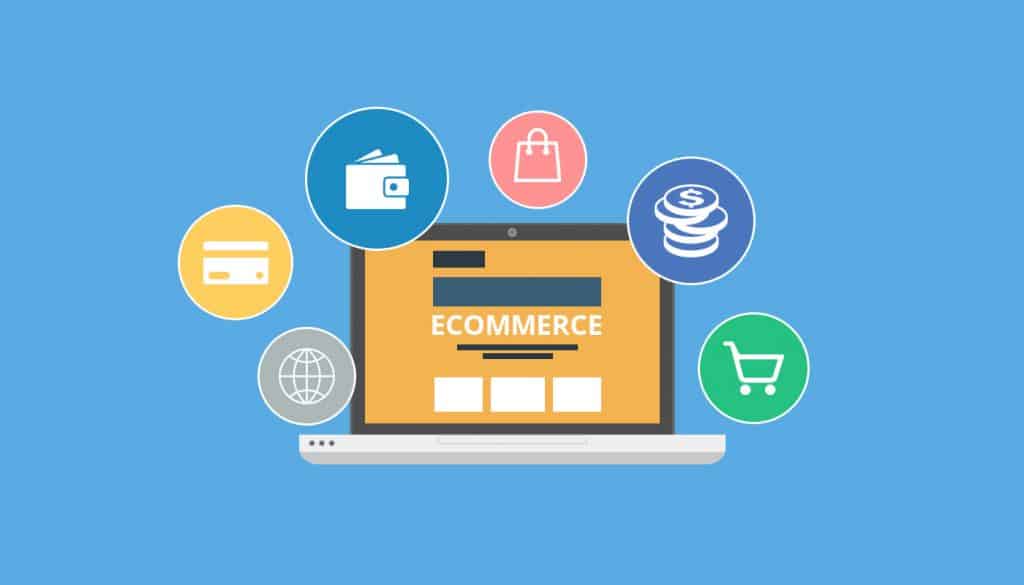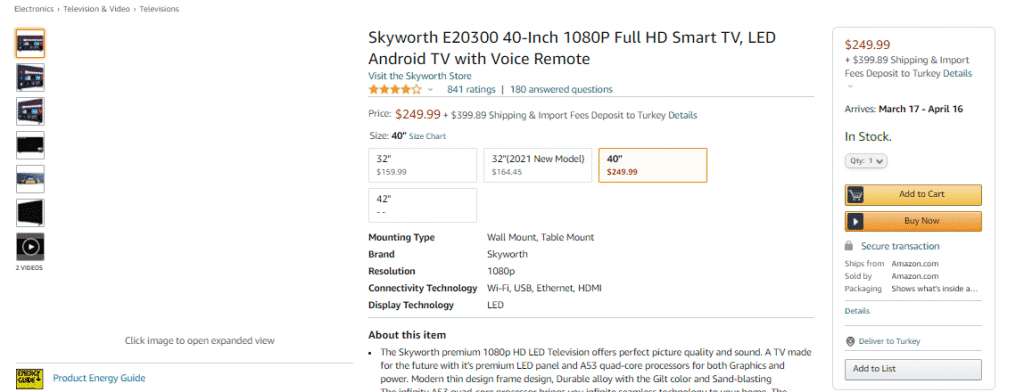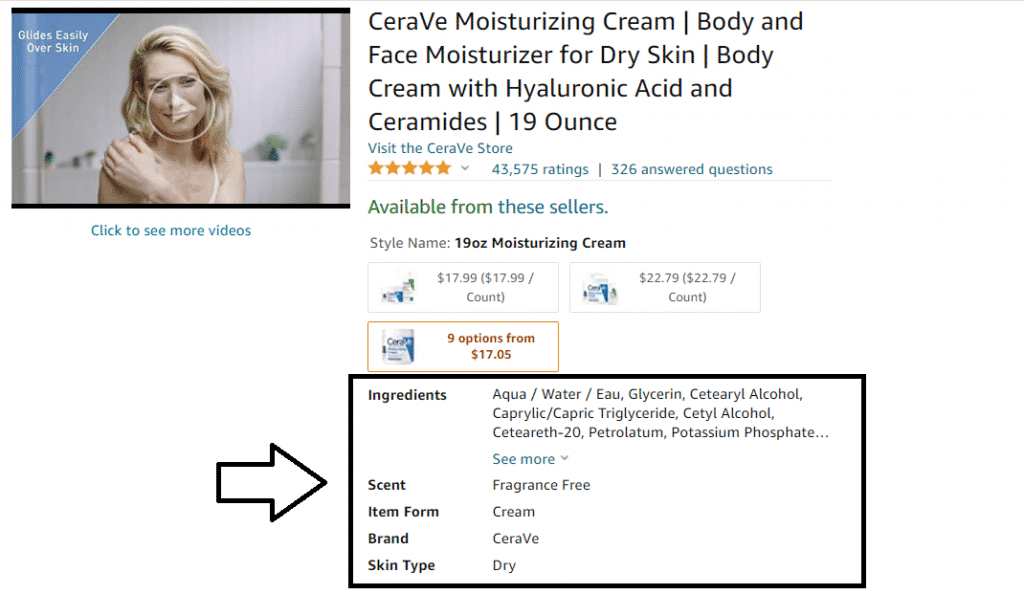E-Commerce UX Best Practices – 2021 Updated Tips
Today, as online shopping habits are getting stronger day by day, intense competition continues between e-commerce sites. E-commerce sites want to get the best conversion rates, profit rates, and the best rankings on Google while they are focusing on e-commerce UX best practices.
So what to do about all this?
We mentioned earlier in our content named the best SEO techniques for e-commerce sites, what you should do to meet what the search engines want directly. Today we will talk about what to do when addressing our main heroes, our potential customers: E-commerce UX Best Practices!
Screpy experts reviewed many e-commerce sites. With an analysis of the sites with the highest UX scores among these, we created a list of what e-commerce UX best practices could be. If you’re ready, we’re ready to get started with a few key points!
Try for free to boost your website traffic!
Why Does E-Commerce SEO Matter?
E-commerce UX means primarily hosting your customers who come to your store.
When customers who come to physical stores have a question or problem about which product is where, about the features of a product, or about the sales process, they directly contact the store attendants. The situation in e-commerce sites is quite different from this.

All the information and assistance you can offer to users on e-commerce sites should already be available on your site, without further request. Because it is too optimistic to encourage people to call you for extra and assume that they will try to find a solution to your problems, rather than giving up on you.
Remember, you have thousands of competitors in the e-commerce world, and each of them works with powerful designers, generating powerful ads: So not presenting the best on an e-commerce site is reason enough to lose customers.
In that case, you need to turn your e-commerce site into a very useful area for the user to reach something, examine things and solve their problem, if any.

From the product description sections to the purchase buttons, from the payment page to the points to navigate between categories.
You know what to do for this: E-commerce UX Best Practices!
In this way, you can get the following feedback from your target audience:
- The duration of your visitors to stay on your site may increase.
- Bounce rates may decrease.
- The rate of the behavior of your visitors to show a conversion (especially to buy) can increase.
- The time your visitors turn into loyal customers can be shortened.
- Your profit rates may increase.
- All of these have a positive effect on your SEO score and your rankings can increase.
Now, are you ready to learn how to achieve anything?
Test Your Website Issues
You can quickly analyze your site
Product Page is Your Everything! – Tips for Effective Product Pages
Your visitors are very valuable -hey, because you want to sell them your products and get profits.
So first of all, you have to make sure that you give enough detailed information about the products on your product pages. Researches show that users always take a look at product descriptions before purchasing products. Even if this field is not read, the detailed writing of this field can give confidence to the user.

So, what should you have in the product page?
E-commerce UX best practices says: Some things must be found, some things are great if they are found, and some things can provide excellent conversions that will set you apart from other e-commerce sites at a high rate.
Must Haves on Product Page
Hey, first of all, the name of your product is required. It may look too easy for you, but are you sure that you are careful about that this name is descriptive?
For example, can you imagine writing “Fabric” only for a fabric? Of course no! Instead, it might make a lot more sense to write “Flower Patterned Silky Fabric Red and Blue”. This will make it easier for a user searching for a product to find this product on the e-commerce site.

- Include images of the product that can be easily understood and distinguished. Be very careful that these images are not misleading.
- Let people zoom in on these images by clicking on them. Remember, e-commerce sites gain customers to the extent they can offer trust. You have to give them that trust.
- Keep the price of the product on the page.
- It must also write whether the product is in stock or not.
- Finally, research has revealed that both the “add to cart” button and the “buy now” button is very important. Be sure to use both of these buttons for those who want to purchase the product directly without any additional steps in between.
Things Can Increase Conversion
86 percent of users say ratings for a product has a direct impact on their buying behavior. So what exactly does this mean?
- There should be ratings given on purchases made by previous customers. Displaying these ratings and customer reviews on the product page can produce great results. On some websites where there are plenty of reviews, there may be many people who give up buying a product just because they do not have many reviews.

Test Your Website Issues
You can quickly analyze your site
- If you think this is needed, hosting additional photos and videos showing the usage processes of the product can entice users to buy the product. In addition, professional photos that highlight a specific function of the product will also be of great value to you.
- Under each product, you should definitely suggest new products with the name “related products” or “who looked at this product also looked at them” This type of practice will make it easier for users to navigate your site and decide on one by navigating between different products. In addition, this also a good practice to improve link building and on-page SEO.

Things Can Boost Sales Rates
There are some features that will maximize the user experience if you work professionally enough.
- Allow users to share photos while commenting. The photos shared by real users after purchase are much more persuasive than the photos you add.

- Take advantage of the photos of the products that will provide 360-degree viewing. Especially, such a feature can be very useful on pages where the thickness of products such as television, computer, and telephone are needed to be examined.
- Include step-by-step explanations on how the product is used.
- If such a thing is possible, install a plugin that will allow users to try the product virtually. Hey, this must be the fanciest recommendation among e-commerce UX best practices!
Use Live Chat Marketing
Live Chat Marketing has become the primary on-site marketing tool of e-commerce sites, especially since 2015. This method, which is powerful enough to persuade users not to leave the site despite the negativities, is based on live agents responding to the user in a few seconds and solving the problem he posed personally.
Research has revealed that e-commerce sites that use live chat marketing convince 51 percent more users to stay on the site than others. This is not a very surprising result considering the relationship between UX, conversion rates, and bounce rates. So how can live chat marketing achieve this?
The Advantages of Live Chat Marketing
Live chat marketing shown between e-commerce best UX practices provides the following advantages:

- We know that the age of the tickets is really old. With millions of different e-commerce sites selling each product group, it is really unlikely that a customer will wait for a response to the ticket within 48 hours. Live chat marketing keeps the user tight by eliminating the response time and ensures that he does not leave the site.
- Live chat marketing solves problems even if live agents are not there at the moment. Live chat marketing robots, which are much smarter today than in the past, analyze the keywords in the messages written by the users and give the links of the guide content written on similar problems to the users.
- Live chat marketing minimizes abandoned cart rates. Imagine: isn’t that exactly the main purpose of e-commerce UX best practices? Live chat marketing offers options for the solution of the problem to people who do not complete their shopping due to a problem that has arisen at the last moment and thus increases their purchasing rates.
Let Your Customers Compare Products
Today, internet users are aware that there are thousands of different options from each product type. So it’s a problem, not an advantage if you don’t show them to them.

Detailed Information About Product Variant
While giving information about the product, give accurate information about its detailed features. For example, provide information about the size, width, and height of a product one by one. If you are talking about an outfit, tell us exactly where the pockets are and the size of those pockets. Provide descriptive information about colors, flavors, or details that the product has a different feature compared to other alternatives.
Would you like us to give an example?
For example, let’s say you order a coat. When you order a thick coat for winter, to know where the product has pockets, to have information about the sizes of different pockets, to closely see the texture and thickness of the fabric of the product, to examine the color differences of the interior, and exterior, to zoom into the area with the logo on the product, the elastic part of the product. If available, it would be great to look at this, closely examine the zipper of the product, see a photograph that clearly shows whether the hood is detachable or not, right?
If you saw a product showing all of these one by one, perhaps you can buy it directly without ever reading the product description. That’s exactly what we’re talking about. You should provide very detailed information and the information you provide should be reviewable.
Comprehensive Product Comparison Tables
Offer comparison tables to your users. These tables can be a great guide, especially when buying electronics and believe us, they really do increase the conversion rates a lot. In fact, Amazon seems to be a bit more advanced on this: They even have comparison tables even for fabric softeners!
Let’s examine an example together. For example, consider buying an exercise band set. Each band can differ from the others in terms of quantity, intended use, small, features or contact with skin. When you scroll while looking at a product, wouldn’t it allow you to have a great user experience to see a table like the one below comparing different product types?

Make sure the site is in a general consistency
In e-commerce UX best practices, we will make a warning that is borne by many people: take care that your site offers integrity as a whole.
The visitor to your site automates their navigation movements after a point as if they were on a real shopping store. While reading the details about the products or examining the product variations in the “see also” section, they become now used to your site, which increases their user experience.
But if you cause people to encounter completely different pages while in different product categories, you will prevent them from gaining a browsing habit that integrates with your site. So make sure that the different pages are in harmony for the following terms:
- Amount of product information
- Similar page designs
- A product suggestion area in the style of “See Also” on all pages
Speed Issues for E-Commerce UX Best Practices
We mentioned some very important things in our buying behavior and page speed content and page speed and UX content previously published:
- People lose their trust in sites that show poor page speed, and therefore the likelihood of these people shopping on this site falls below 30 percent.
- If the page speed is low for people to shop, make payments and complete the purchase, they demand a much longer time and becomes more difficult. Therefore, not many people prefer to do this.
If you want to have an e-commerce site with strong results in terms of UX, remember that you need to have a high page speed score in both the payment steps and the navigation process between categories.
FAQ
What is the number one thing that makes a good user experience on an e-commerce site?
One of the most important factors that will strengthen UX for a user on an eCommerce site is visible trust badge graphics. Thanks to these, you will maximize the user’s browsing and shopping experience. You can usually add them to the pages showing the details of the products, shopping cart area, checkout area, or profile area. In this way, you increase the confidence of the user during buying. This increases your chances of being revisited.
What is UX in eCommerce?
The experience perceived by the end-user regarding the pages, products, and services of the page within an eCommerce site is called UX. UX stands for user experience. An accurate UX score for eCommerce often depends on multiple factors such as experience from different devices, page speed, ease of navigating between products, categorization, sitemap, checkout page, security, and theme. In short, every details about eCommerce site can be a factor that affects the shopping experience.
What makes a good eCommerce experience?
It can be said that eCommerce site visitors basically looking for two things: Ease and speed. Ease generally means that the requested product can be accessed in the easiest way. For example, the categorization in the breadcrumbs or the site’s map is related to this. Speed can be measured by the pagespeed score.
How do I build a good eCommerce website?
1. First of all, remember that users will want to shop in a simple area. Buttons or fields that will confuse them should not be on the page.
2. Remember that you need to keep branding strong.
3. The color of your page should not prevent products from being viewed easily.
4. Don’t forget to make navigating easier with breadcrumbs and similar structures.
5. Save cookies and by that way, increase the likelihood of conversions by providing users with personalized recommendations.
6. Offer a fast website. A frozen website reduces the likelihood of users’ buying behavior by 70 percent.
7. Use high-quality images and let users see all areas of the products. Only in this way can you have a chance to gain user trust.
8. You should take care that navigating between categories is easy. Don’t forget to combine the right subcategories with the right parent categories.
What is the best eCommerce website builder?
Website builder options that allow you to easily manage your site in Ecommerce and offer high UX to your users can be listed as follows:
1. Wix: It is known as a builder that has been on the rise recently.
2. Shopify: Actively used by thousands of people and has a powerful panel.
3. Squarespace: Discover this website builder that you can easily choose, especially if you have a creative eCommerce product catalog.
4. Weebly: If you have a small store and appeal to a boutique audience, it might be a good choice.
5. BigCommerce: An extremely powerful and frequently used builder.
What are the ways to improve UX in an ecommerce site?
1. If you are selling personalized products, you must guide your users, so they can feel safe while purchasing.
2. The website structure should be organized. Don’t forget to include the basic categories in the top bar of the site and the child categories below them.
3. Receive customer feedback regularly and try to improve the services or support you offer on your site accordingly.
4. Allow users to create lists by saving specific products. For this, you can create additional options such as collection, list, or a wishlist. All of them can be useful.
5. Let users navigate easily between products using breadcrumbs.
6. Remember that you should also suggest different products under a product that the person might be interested in.
7. Provide users with all necessary information in a transparent way. It is very important that you provide all the information from the material of the product to the production process, allow users to comment on the product, and tell about their shopping experience.
How do I optimize my eCommerce website?
1. First of all, you must have specific target keywords.
2. Have category contents and product description contents that contain various target keywords.
3. Remember that every single page of yours needs metadata.
4. Use alt tags for each image you use and show Googlebots more clearly what your pages are about.
5. Optimize your homepage. This will require a strong link structure and categorization.
6. Make sure the product pages are UX-oriented.
7. You should make sure you configure all URLs according to parent and child categories correctly.
Is UX important for eCommerce?
Yes. It is extremely important for the SEO and conversion rates of an eCommerce site. SEO allows you to get a high rate of traffic while UX ensures you have a conversion from that traffic. Both are extremely important for your income and success.
What is a comprehensive eCommerce UX optimization checklist?
Note the following:
1. Enhance product pages and make them more detailed.
2. Add a ‘Buy Now’ button as well as the ‘Add to cart’ button for each item.
3. Don’t forget to use Upsell.
4. Enhance the mobile experience. Get good results in terms of theme, speed, and navigation. If possible, get a mobile app.
5. Provide personalization. You can do this with cookies.
6. Optimize pricing and do a detailed market analysis for it.
7. Obtain a mailing list. For this, you need to have call-to-action pages that convince users to give you their emails.
8. Increase your sales rates with Flash sales.
How do I increase the e-commerce conversion rate?
The best way to boost conversion rates is to make UX-driven optimizations. For that, check out the following:
1. Use enough visuals and details on product pages.
2. Free shipping always triggers the purchasing process.
3. Define coupon codes that can be used in a limited time.
4. Present your prices regularly with the campaign and announce these campaigns to the users.
5. Make sure there are no errors or slowdowns in the checkout process. You don’t want people to stop buying at the last moment.
6. Don’t forget to support your users with live chat support.
7. Manage a target-oriented optimization process by analyzing cart abandonment behavior.
Test Your Website Issues
You can quickly analyze your site